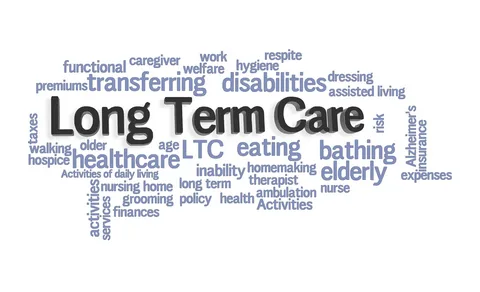Cultural Adaptation in the Workplace
Cultural adaptation in the workplace is essential for fostering a harmonious and productive environment, especially in increasingly diverse work settings. As globalization continues to shape the job landscape, understanding and embracing cultural differences has become vital for both employees and employers. This blog explores the importance of cultural adaptation, the challenges faced, and practical strategies for successfully navigating diverse workplaces.
Understanding Cultural Adaptation
Cultural adaptation refers to the process of adjusting to a new culture and its social norms, values, and behaviors. In a workplace context, this means recognizing and respecting the diverse backgrounds of colleagues, clients, and business partners. Effective cultural adaptation can enhance collaboration, improve communication, and boost overall team morale.
The Importance of Cultural Adaptation
- Enhanced Communication: Understanding cultural nuances can prevent misunderstandings and promote clearer communication among team members. For example, directness may be valued in some cultures, while others may prefer a more nuanced approach.
- Increased Collaboration: A culturally adaptive workplace encourages teamwork by valuing diverse perspectives. This leads to innovative solutions and improved problem-solving, as team members contribute unique insights.
- Employee Satisfaction: When employees feel respected and understood in their cultural context, job satisfaction and loyalty increase. A supportive environment enhances retention and reduces turnover.
- Global Competitiveness: In today’s global economy, businesses that prioritize cultural adaptation can effectively engage with international clients and partners, enhancing their competitive edge.
Challenges in Cultural Adaptation
- Communication Barriers: Language differences can lead to misinterpretations or frustrations. Non-verbal communication cues can also vary, making it essential to be aware of how gestures and expressions are perceived across cultures.
- Different Work Styles: Cultural backgrounds can influence work preferences, such as attitudes toward punctuality, hierarchy, and decision-making processes. Adapting to these differences requires flexibility and openness.
- Resistance to Change: Employees may resist cultural adaptation due to preconceived notions or biases. This can create friction in the workplace, making it harder to build a cohesive team.
- Limited Cultural Awareness: A lack of understanding about other cultures can lead to stereotypes and misunderstandings. Encouraging cultural education is crucial for overcoming these challenges.
Strategies for Cultural Adaptation
- Promote Cultural Awareness Training: Employers can provide training sessions that educate employees about different cultures, communication styles, and workplace behaviors. This fosters understanding and encourages open discussions.
- Encourage Open Communication: Create an environment where employees feel comfortable discussing their cultural backgrounds and sharing experiences. Regular team meetings can provide a platform for this exchange.
- Foster Inclusivity: Implement policies that promote inclusivity, such as celebrating cultural events and recognizing diverse holidays. This not only enriches the workplace culture but also helps employees feel valued.
- Emphasize Active Listening: Encourage employees to practice active listening when interacting with colleagues from different cultures. This involves paying close attention, asking clarifying questions, and acknowledging different viewpoints.
- Be Adaptable: Encourage flexibility in work styles and approaches. Recognizing that different cultures have varied preferences for collaboration and communication can enhance teamwork.
- Leverage Diverse Teams: Forming diverse teams can lead to richer discussions and innovative solutions. Embrace the strengths of each team member and leverage their unique backgrounds for collective success.
- Mentorship Programs: Establish mentorship programs that pair experienced employees with newcomers from different cultural backgrounds. This can help ease the adaptation process and provide support.
- Seek Feedback: Regularly solicit feedback from employees about their experiences in the workplace. This can help identify areas for improvement and ensure that everyone feels included.
Building a Culturally Adaptive Workplace
- Leadership Commitment: Leadership plays a crucial role in promoting cultural adaptation. Leaders should model inclusive behaviors and demonstrate a commitment to diversity and cultural sensitivity.
- Set Clear Expectations: Clearly communicate the organization’s values regarding cultural diversity and inclusion. Setting expectations can guide employee behavior and foster a positive workplace culture.
- Encourage Cultural Exchange: Facilitate opportunities for employees to share their cultural experiences, such as hosting potlucks, cultural fairs, or workshops. These activities can strengthen bonds and promote mutual respect.
- Utilize Technology: Leverage technology to bridge cultural gaps. Collaboration tools and platforms can facilitate communication and help teams work together effectively, regardless of geographic location.
- Evaluate and Adapt Policies: Regularly assess organizational policies and practices to ensure they are inclusive and supportive of cultural diversity. Make necessary adjustments to promote a more adaptive workplace.
Conclusion: Embracing Cultural Diversity
Cultural adaptation in the workplace is not merely a benefit but a necessity in today’s globalized environment. By understanding and embracing cultural differences, organizations can enhance collaboration, improve employee satisfaction, and foster a more innovative atmosphere. Through proactive strategies and a commitment to inclusivity, companies can create workplaces where everyone feels valued and empowered to contribute their best. As we navigate this diverse landscape, it’s essential to recognize that cultural adaptation is an ongoing journey that requires patience, openness, and a willingness to learn.










